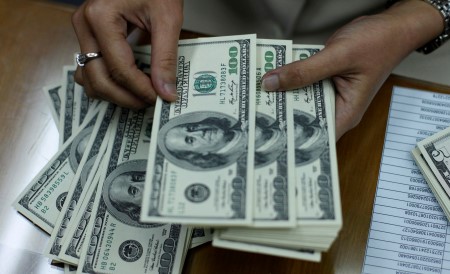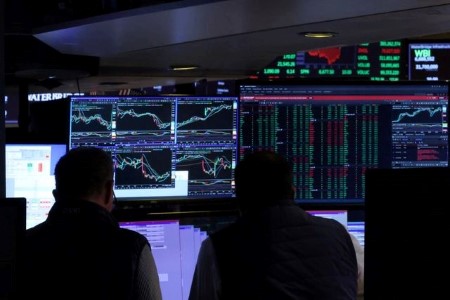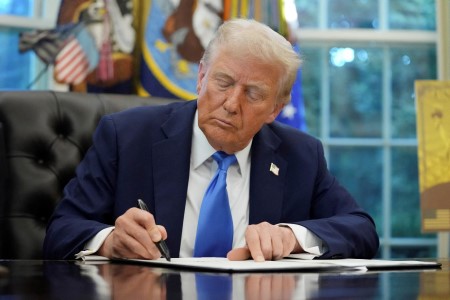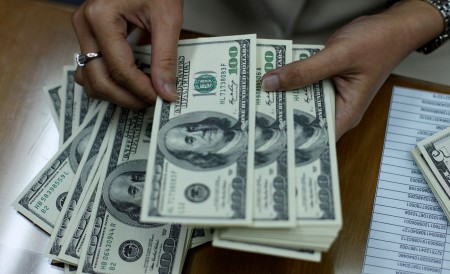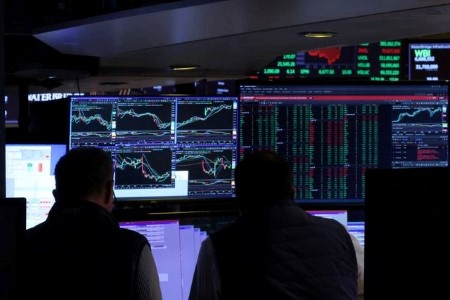NEW YORK/LONDON – The US dollar gained against the yen, Swiss franc and euro on Wednesday, after Federal Reserve Chair Jerome Powell struck a cautious tone on further easing overnight, while the New Zealand dollar eased following the appointment of a new central bank chief.
The dollar strengthened 0.46% to 0.795 against the Swiss franc, on track to snap two consecutive sessions of losses.
The euro was lower against the dollar after German business morale fell unexpectedly in September. It was last down 0.67% at USD 1.1736 after rising for the last two sessions. Sterling declined 0.68% to USD 1.3431. It was steady against the euro, at 87.34 pence.
INFLATION AND JOBS MARKET IN FOCUS
“The dollar is a little firmer broadly against most of the G10 although it is still choppy and range bound,” said Marvin Loh, senior global market strategist at State Street in Boston.
“Based on our flows and holdings data, the dollar is still very underweight kind of within the real money community so I think it’s due for a period of consolidation and that’s ultimately what it’s doing.”
Powell maintained a cautious tone on Tuesday, saying the Fed needed to continue balancing the competing risks of high inflation and a weakening job market in coming rate decisions.
Markets are expecting quarter-point rate cuts at the remaining two Fed meetings this year and another in the first quarter of 2026, in line with the central bank’s guidance after last week’s meeting.
This week’s US data will be in focus, particularly Friday’s release of the personal consumption expenditures price index, a key input for shaping expectations on the Fed’s next policy steps.
“We are still data point-to-point with regard to the Fed, and that’s going to be the catalyst for rates and the dollar in terms of determining how aggressive or hawkish the market starts to view the Fed,” Loh added.
The US dollar index =USD, which measures the currency against six major rivals, added 0.65% at 97.87, attempting to claw back ground after two straight losing sessions.
San Francisco Fed President Mary Daly will speak later in the day.
NEW ZEALAND CENTRAL BANK GOVERNOR
Candidates for the next leader of Japan’s ruling Liberal Democratic Party answered journalists’ questions on Wednesday. Frontrunner Sanae Takaichi, a fiscal and monetary dove, said monetary policy was up to the Bank of Japan but higher rates could affect mortgages and corporate investment.
Against the yen, the dollar added 0.75% to 148.73 yen, hitting its highest in three weeks and set to snap three straight sessions of losses.
New Zealand’s dollar traded down 0.72% at USD 0.5814 after Swedish central banker Anna Breman was named as the next Reserve Bank governor, becoming the first woman in the role.
The Australian dollar weakened 0.17% versus the greenback to USD 0.6587. Data showed that inflation climbed more than expected to 3% in August, less than a week before the Reserve Bank’s next policy meeting.
(Reporting by Chibuike Oguh in New York; Additional reporting by Kevin Buckland in Tokyo; Editing by Amanda Cooper, Ed Osmond, and Alison Williams)







 DOWNLOAD
DOWNLOAD




